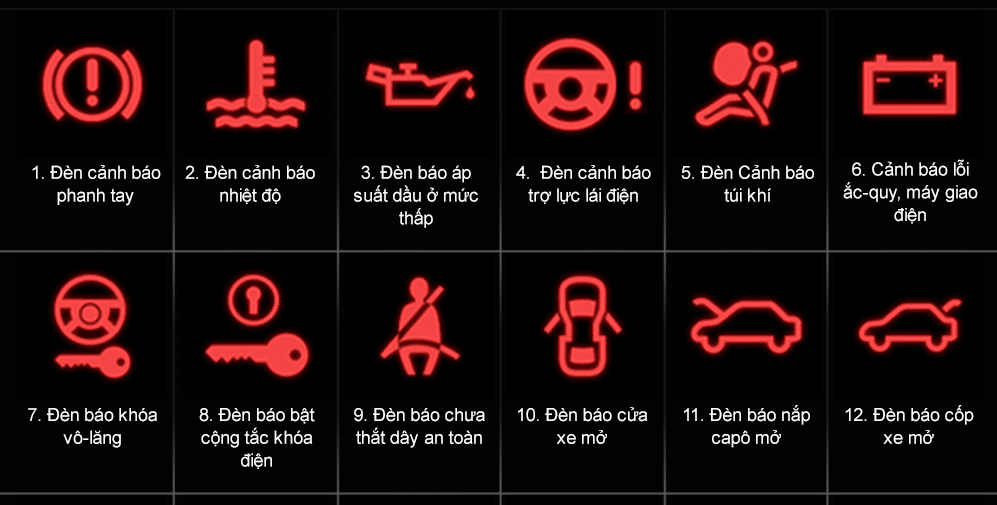The hazardous warning lights in a car that drivers need to know about—new drivers should read this without delay.
What types of warning lights are there in cars?
The multifunctional display in a car provides comprehensive data related to the vehicle, including warning lights. These lights are divided into three categories: operational notifications, error notifications, and hazard warnings.
Operational notification lights are displayed in green or blue to inform the driver about functioning systems such as the lighting system, turn signals, and other electronic systems.
Hazardous warning lights in cars that drivers need to know about – Image 1. Operational notification lights shine in green, error notification lights in yellow, and hazardous warning lights in red.
Error notification lights appear in yellow to alert the driver about malfunctioning or incorrectly functioning systems like engine warnings, brake system warnings, fuel warnings, etc.
When an error notification light comes on, the driver should either stop the vehicle and check the related systems or drive to the nearest repair center.
Hazardous warning lights, glowing red, indicate systems encountering critical issues. Continuing to drive when these lights are on can lead to severe damage.
To ensure safety, when these warning lights illuminate, the driver should stop the vehicle and take it to the nearest repair shop to address the issue.
Hazardous warning lights that drivers need to pay attention to:
Firstly, the warning light for the braking system. This warning includes the parking brake and foot brake system lights.
Forgetting to release the parking brake before driving is not uncommon, especially for new drivers. The consequence of not releasing the handbrake can lead to brake system damage, which could affect the transmission system and engine.
Therefore, before driving, the driver should check if the warning light is still on and re-check the parking brake. It’s not advisable to forcefully accelerate the vehicle.

Hazardous warning lights in cars that drivers need to pay attention to – Image 2. Hazardous warning lights that drivers need to pay attention to.
Next, the driver needs to pay attention to the engine coolant temperature warning light. When this light comes on, it indicates a problem with the vehicle’s cooling system and an overheating engine. If the driver fails to notice this, it could result in engine overheating, causing the engine to seize and significant repair costs.
Similarly, insufficient engine lubricating oil can lead to similar consequences. When there’s a lack of lubricating oil, mechanical components friction generates heat, causing parts to expand and lock together.
Oil shortages often occur in vehicles with irregular maintenance schedules. When the lubricating oil level is too low, a warning light will appear on the display. The driver should exit the vehicle and check the oil level with a dipstick. If oil shortage is detected, the vehicle should be taken to the nearest garage to avoid severe consequences.
Additionally, drivers should pay attention to hazardous warning lights related to systems such as airbags, doors, battery, steering systems, seat belts, etc.












